Table of Contents
The role of Japanese food in cultural and religious practices is a fascinating topic that reveals the deep connections between cuisine, tradition, and spirituality in Japan. From the offerings made to Shinto deities to the symbolic dishes served during Buddhist ceremonies, food holds immense significance in Japanese culture. This article from Tauhuichiban explores the multifaceted role of Japanese food in cultural and religious practices, shedding light on its historical and contemporary importance.
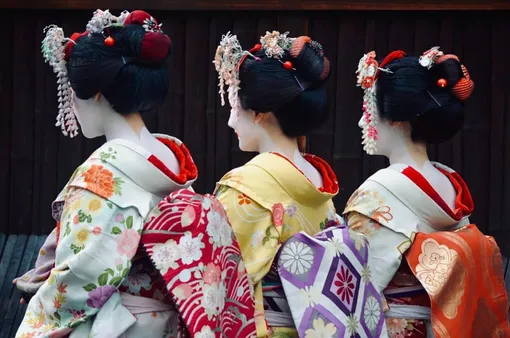
The Role of Japanese Food in Cultural and Religious Practices: A Culinary Journey
I. Japanese Food: A Culinary Expression of Cultural and Religious Traditions
Japanese cuisine, deeply entwined with Shintoism, Buddhism, Confucianism, and Christianity, plays a pivotal role in Japanese cultural and religious practices. Offerings of food to deities and symbolic dishes hold immense significance in Japanese traditions and rituals. Shintoism, the indigenous religion of Japan, has a strong connection with nature. Food is believed to be a gift from the gods, and offerings of fresh, seasonal produce are made to show gratitude. Festivals like Yuki Matsuri (Snow Festival) and Kanamara Matsuri (Iron Phallus Festival) feature unique food offerings that reflect the vibrant spirit of Shintoism.
Buddhism, which arrived in Japan from India in the 6th century, brought with it vegetarianism and a focus on simple, wholesome meals. Buddhist monks adopted a diet based on seasonal vegetables and fruits, and the aesthetics of Zen Buddhism influenced the development of shojin ryori, a refined vegetarian cuisine, often utilizing tofu. The kaiseki dining experience, a multi-course Japanese meal, was initially developed by Buddhist monks and involves carefully prepared dishes that follow the principles of seasonality and balance.
| Religion | Type of Offerings | Notable Foods |
Shintoism | Offerings to deities | Rice, sake, vegetables, fruits |
Buddhism | Offerings to Buddha and monks | Vegetarian dishes, tofu, shojin ryori |
Confucianism, a philosophy that emphasizes respect for authority, family, and education, also influenced Japanese food customs. Respect for elders is shown through dining etiquette, and meals are often a time for strengthening family bonds. Foods such as sekihan (red rice) and oshiruko (sweet azuki bean soup) are traditionally enjoyed on special occasions, symbolizing good luck and longevity.
Christianity, introduced in Japan in the 16th century, has been gradually adapted to the Japanese culture. While the consumption of meat is not traditionally part of Japanese religious practices, its inclusion in the Japanese diet has resulted in the development of unique dishes like tonkatsu (breaded pork cutlet) and korokke (croquettes). Christian festivals, like Christmas, are frequently celebrated with special meals involving Western-style foods, showcasing the cultural assimilation of Christianity in Japan.
- The History and Culture of Japanese Cuisine
- The Etiquette and Customs of Japanese Dining
- The Regional Specialties and Variations of Japanese Food
- The Most Popular Japanese Dishes and Their Origins
- The Most Exotic and Adventurous Japanese Dishes
Modern Japanese food culture reflects a harmonious blend of tradition and innovation. Traditional dishes like matcha tea and udon noodles coexist alongside contemporary culinary creations that combine Japanese ingredients with Western techniques. The emergence of fusion cuisine, such as sushi burritos and ramen burgers, exemplifies the adaptability of Japanese cuisine while embracing global culinary influences.
In conclusion, Japanese food is deeply interwoven with the nation's cultural and religious fabric. From offerings to deities in Shinto shrines to the aesthetics of Buddhist vegetarian cuisine, Japanese culinary traditions have been shaped by the beliefs, customs, and festivals of their people. Over the centuries, the influence of Confucianism, Christianity, and international culinary exchanges have further enriched the diversity and complexity of Japanese food culture, showcasing its resilience and adaptability while preserving its unique character.
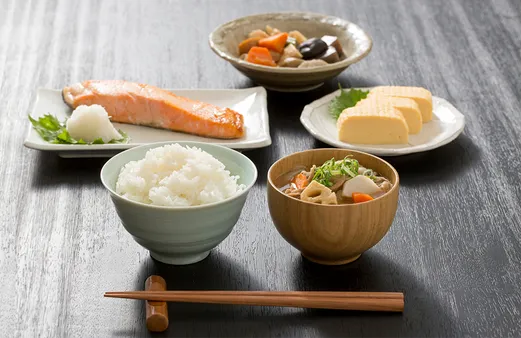
Japanese Food: A Culinary Expression of Cultural and Religious Traditions
II. Ritual Foods and Offerings: The Role of Japanese Cuisine in Religious Practices
Japanese cuisine plays a significant role in religious practices, with offerings of food and drink holding deep symbolic meanings. In Shinto rituals, offerings of rice, sake, and other foods are made to the kami (spirits) to express gratitude and seek blessings. In Buddhism, vegetarian dishes are often served at temples and monasteries, reflecting the Buddhist principle of non-violence. Confucianism also emphasizes the importance of food in rituals, with specific dishes prepared for ancestral offerings and festivals.
One of the most important ritual foods in Japanese culture is mochi, a sticky rice cake that is often offered to the kami during festivals and celebrations. Mochi is believed to bring good luck and prosperity, and it is also used in a variety of traditional ceremonies, such as weddings and funerals. Another important ritual food is sake, a rice wine that is often used in Shinto rituals and is also served at special occasions such as weddings and New Year's celebrations.
Food | Religious Significance |
|---|---|
Mochi | Good luck and prosperity |
Sake | Used in Shinto rituals and special occasions |
Vegetarian dishes | Reflect the Buddhist principle of non-violence |
Ancestral offerings | Prepared for Confucian rituals |
In addition to these specific ritual foods, Japanese cuisine as a whole is often used to express religious beliefs and values. For example, the Japanese emphasis on fresh, seasonal ingredients reflects the Shinto belief in the importance of living in harmony with nature. The Japanese tradition of kaiseki, a multi-course meal that is often served at special occasions, is also said to have originated from Buddhist temple cuisine.
The role of Japanese cuisine in religious practices is a testament to the deep connection between food and culture in Japan. Food is not only a source of nourishment, but also a way to express religious beliefs and values, and to connect with the divine.
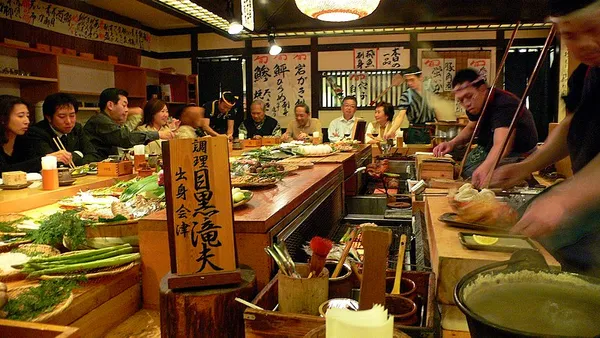
Ritual Foods and Offerings: The Role of Japanese Cuisine in Religious Practices
III. Seasonal Delicacies and Festivals: Japanese Food as a Reflection of Cultural Identity
In Japan, food is not merely sustenance but an integral part of the nation's cultural fabric. Seasonal delicacies and festivals are a testament to this deep connection. From the delicate cherry blossom-flavored treats of spring to the hearty nabemono hot pots of winter, each season brings its own unique culinary delights and festive observances. Check out The Health Benefits of Japanese Herbs and Spices for more details.
One of the most iconic examples of the interplay between food and culture in Japan is the hanami festival. Held in the spring, hanami is the centuries-old tradition of赏花 (literally, "flower viewing"). During this time, people gather under cherry blossom trees to celebrate the beauty of the blossoms and enjoy picnics featuring special hanami-themed dishes such as sakura mochi (glutinous rice cakes filled with sweet red bean paste and wrapped in a cherry leaf) and umeboshi (pickled plums).
Month | Seasonal Delicacy | Description |
|---|---|---|
January | Ozoni | A traditional New Year's soup made with mochi (glutinous rice cakes), vegetables, and various meats. |
February | Setsubun | A festival held on the day before the beginning of spring, featuring the eating of roasted soybean |
March | Hina Matsuri | A festival celebrating girls, featuring the display of dolls and the eating of chirashi zushi (scattered sushi) |
Another notable example is the Obon festival, held in the summer. Obon is a Buddhist tradition where people honor their ancestors by visiting their graves and offering food and drinks. Special Obon dishes include dango (sweet rice dumplings), somen (thin wheat noodles), and kakigori (shaved ice). Check out The Etiquette and Customs of Japanese Dining for additional information.
- Cherry blossom season: March-April
- Golden Week: April-May
- Obon: July-August
- Autumn foliage season: September-November
- New Year's Eve: December 31st
The connection between food and culture in Japan is undeniable. Seasonal delicacies and festivals are cherished traditions that both celebrate the beauty of nature and foster a sense of community. Through these culinary experiences, Japanese people connect with their history, values, and each other.
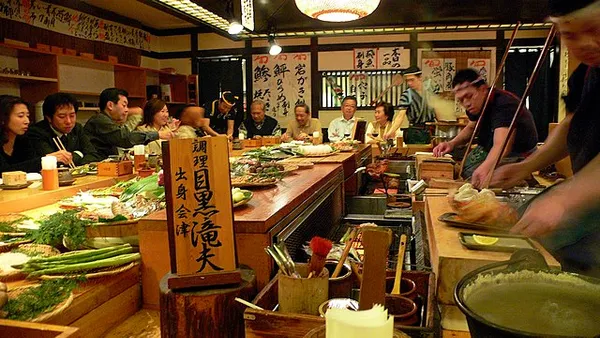
Seasonal Delicacies and Festivals: Japanese Food as a Reflection of Cultural Identity
IV. Food and Aesthetics: The Importance of Presentation and Symbolism in Japanese Cuisine
Japanese cuisine is not merely a culinary delight; it is deeply intertwined with the cultural and religious fabric of Japan. From ancient Shinto rituals to modern Christian celebrations, food holds immense significance in Japanese traditions and practices. This article explores the multifaceted role of Japanese food in cultural and religious practices, examining its connections to Shintoism, Buddhism, Confucianism, and Christianity.
The Art of Presentation
- Japanese cuisine places great emphasis on the visual appeal of food.
- Chefs carefully arrange dishes to create aesthetically pleasing compositions.
- The colors, textures, and shapes of ingredients are all considered in the presentation.
This focus on aesthetics stems from the belief that food should not only nourish the body but also delight the senses. The presentation of a dish is seen as a form of art, and chefs take pride in their ability to create visually stunning dishes.
Symbolic Meanings
Symbol | Meaning |
|---|---|
Rice | Fertility, abundance, and life |
Noodles | Longevity and good fortune |
Fish | Prosperity and good luck |
Beyond its aesthetic appeal, Japanese food also carries deep symbolic meanings. Certain ingredients and dishes are associated with specific occasions, holidays, or religious beliefs. For example, rice is considered a sacred food in Shintoism and is often used in offerings to the gods.
Shintoism and Japanese Food
Shintoism is the indigenous religion of Japan and has a profound influence on Japanese culture and cuisine. Food plays a central role in Shinto rituals and festivals. Offerings of food are made to the gods, and special dishes are prepared for specific occasions.Related Post: The History and Culture of Japanese Cuisine
Buddhism and Japanese Food
Buddhism was introduced to Japan in the 6th century and has since become one of the most widely practiced religions in the country. Buddhism emphasizes compassion and non-violence, which has influenced Japanese food culture in several ways. For example, many Buddhist temples serve vegetarian meals.
Confucianism and Japanese Food
Confucianism is a system of ethical and moral principles that originated in China and was introduced to Japan in the 5th century. Confucianism emphasizes the importance of family, respect for elders, and social harmony. These values are reflected in Japanese food culture in the form of communal dining and the use of specific dishes to honor guests.
Christianity and Japanese Food
Christianity was introduced to Japan in the 16th century and has since become a minority religion in the country. Christian influences can be seen in Japanese food culture in the form of Western-style dishes and desserts.Related Post: The Best Japanese Restaurants in Your City
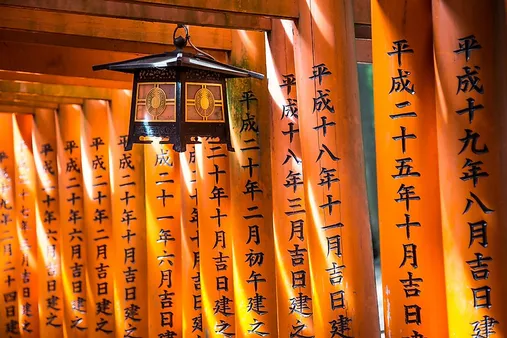
Food and Aesthetics: The Importance of Presentation and Symbolism in Japanese Cuisine
V. Conclusion
Japanese food is more than just sustenance; it is a reflection of the country's rich cultural and religious heritage. From the offerings made to Shinto deities to the symbolic dishes served during Buddhist ceremonies, food plays a vital role in shaping Japanese traditions and practices. As Japan continues to evolve, so too will its culinary landscape, but the deep connection between food and culture will undoubtedly endure.